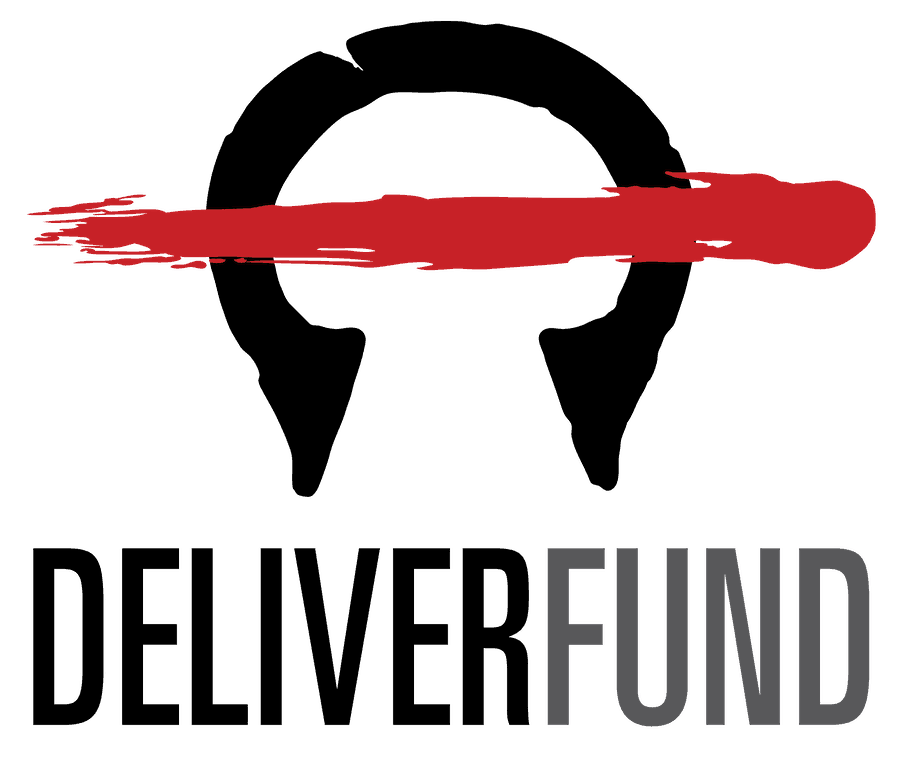Know the Signs of Human Trafficking
Home » The Human Trafficking Problem » Know the Signs
The Indicators of Human Trafficking
There are several indicators that can help identify potential trafficking victims. Being able to recognize red flags and possible indicators is the first step to rescuing the victim and arresting their trafficker.
Human trafficking can happen in plain sight, and it’s not always easy to notice it when it occurs.
For sex trafficking specifically, victims may be staying in brothels, massage parlors, strip clubs, motels, or hidden apartments. Victims of child labor and exploitation may have originally run away from home or been placed in foster care.
People in such a situation do not receive the necessary medicines in the event of the onset of the virus.
Signs of physical abuse or abhorrent living conditions may indicate criminality. Additionally, individuals who aren’t allowed to speak freely or whose responses feel scripted may be in danger.
Click on the indicators for more details
Indicators are not all-encompassing. Every human trafficking victim is different. Victims may exhibit only one of these indicators, or they may exhibit several.
- Not in control of their own ID or passport.
- Not allowed or able to speak for themselves, refusal to make eye contact
- Has little personal property/wears the same clothes over and over again, or carries belongings in a trash bag.
- Paid mostly in cash, not in control of their money/no financial records or bank account
- Recruited with false promises concerning the nature and conditions of their work.
- Unpaid or paid very little by cash tips off the record.
- Has a pimp, manager or someone who will not leave their side.
- Not free to leave or come and go as they wish.
- Works long and/or unusual hours.
- Has a large debt that cannot be paid off.
- Is under the age of 18 and performing sex acts in exchange for anything of value.
- Exchanging commercial sex acts for needs like shelter, food, or other means of survival.
- Fearful, anxious, depressed, submissive, tense, nervous, or paranoid.
- Appears to be under the influence of drugs or alcohol.
- Overly attached to one person or has one person overly attached to them.
- Needs permission or direction to make simple decisions, such as going to the bathroom.
- Show signs of physical and/or sexual abuse, physical restraint, confinement, or torture like bruises, cuts, etc.
- Has branding scars such as burns or tattoos with crowns or money symbols.
- No access to healthcare, or unable to access healthcare without supervision.
- Appears malnourished or extremely skinny.
If you suspect someone is being trafficked, always report suspicious behavior and/or illegal activity to law enforcement.
Never attempt to rescue a victim, confront a suspected trafficker directly, or alert a victim to any suspicions.
It is up to law enforcement to investigate suspected cases of human trafficking.
DeliverFund cannot take tips from the public. Please always contact law enforcement and they will contact DeliverFund for assistance.
- What are the indicators? How are they acting? What do they look like? Where are they? Who are they with?
- Covertly take down vehicle information and plate numbers. Note the time. Record the address of where the encounter occurred.
- Contact local law enforcement and provide them with all the details you have. Call 911 if you are witnessing an emergency situation.
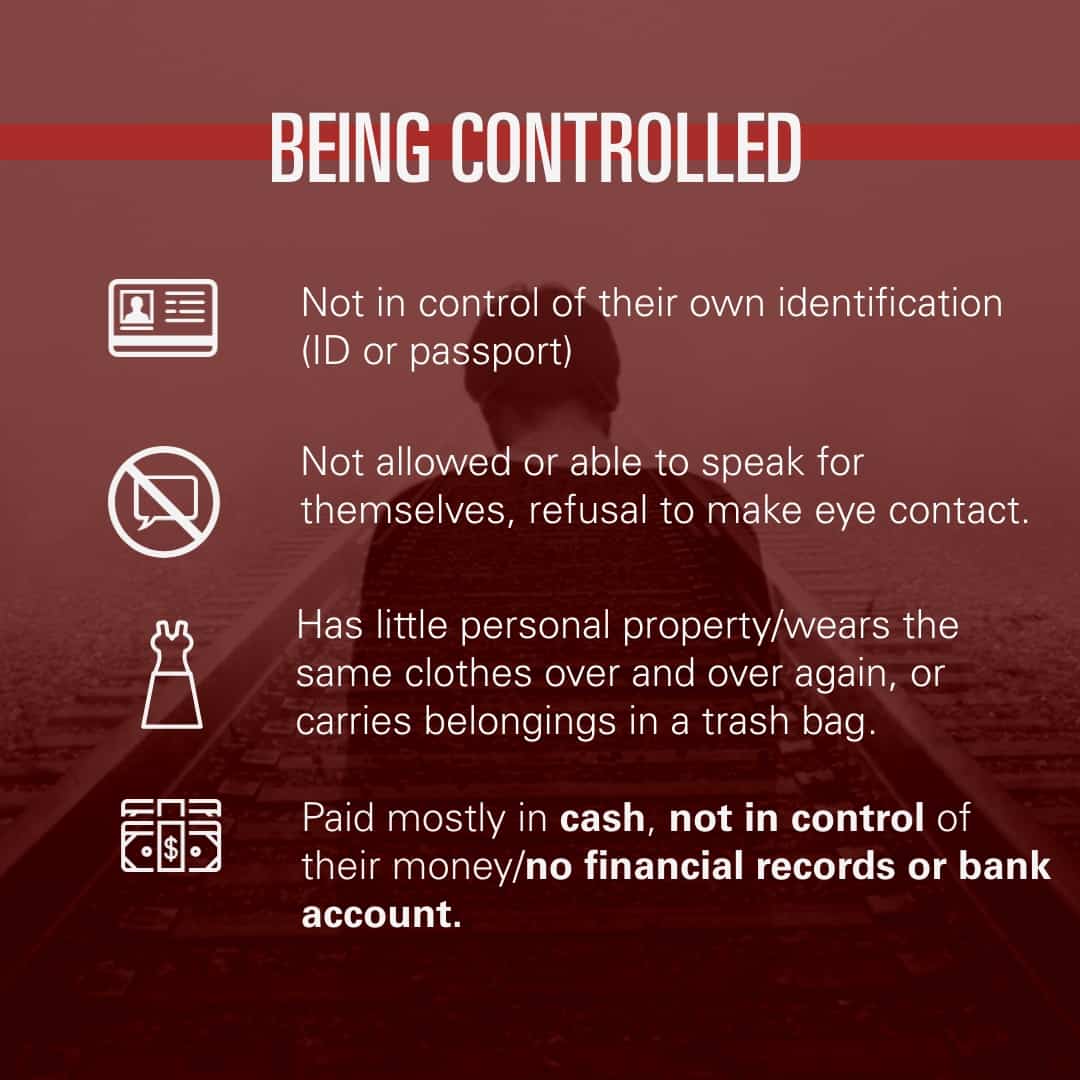
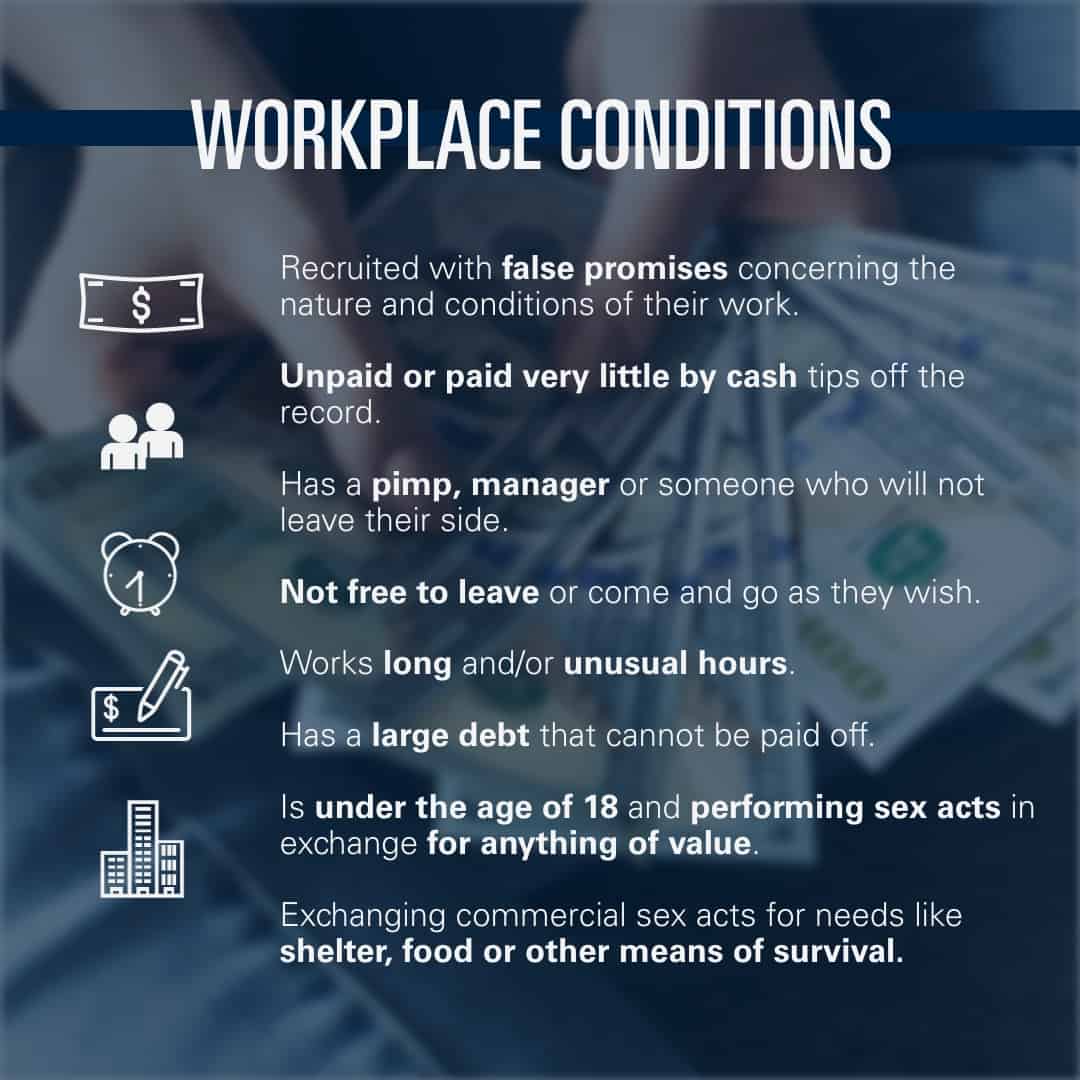
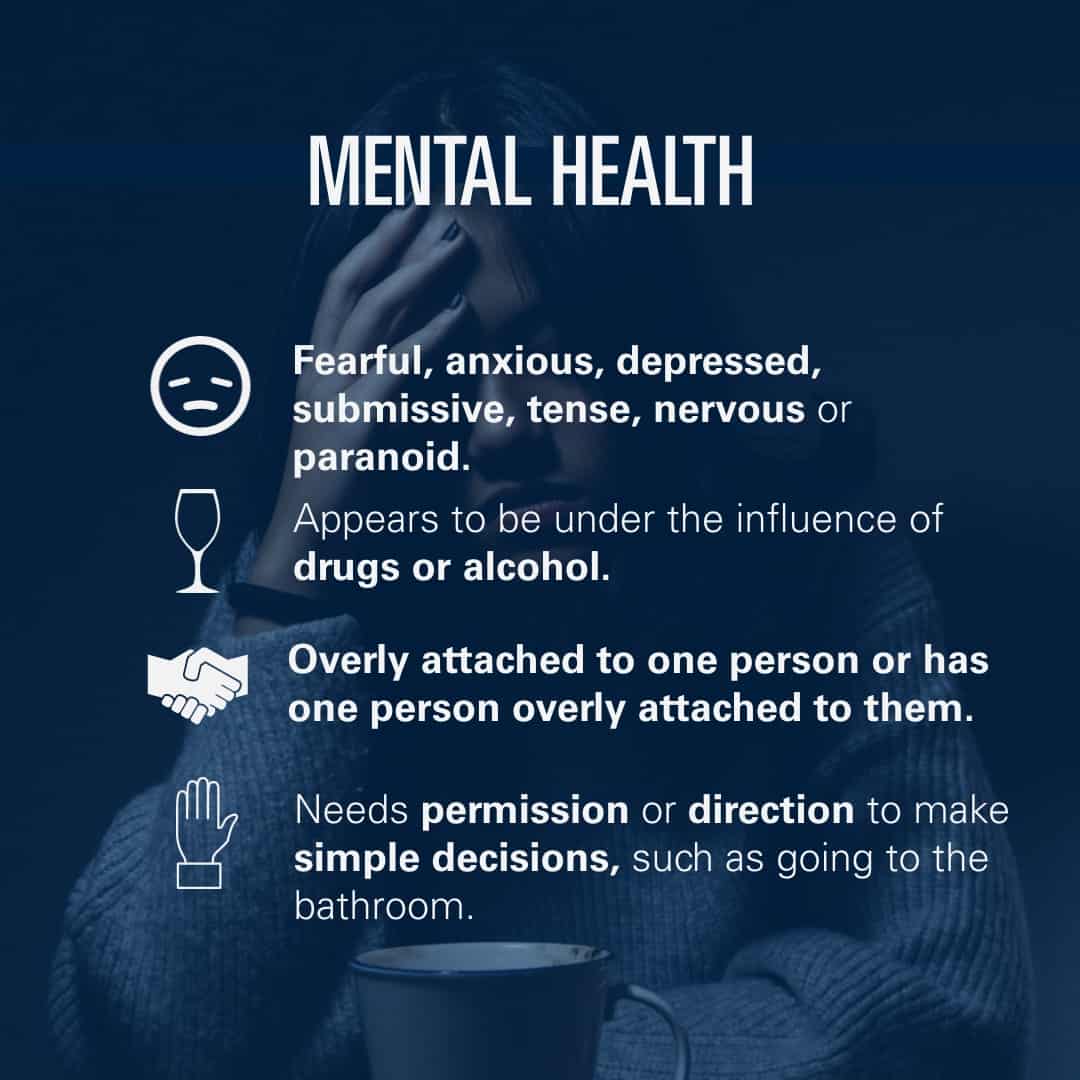
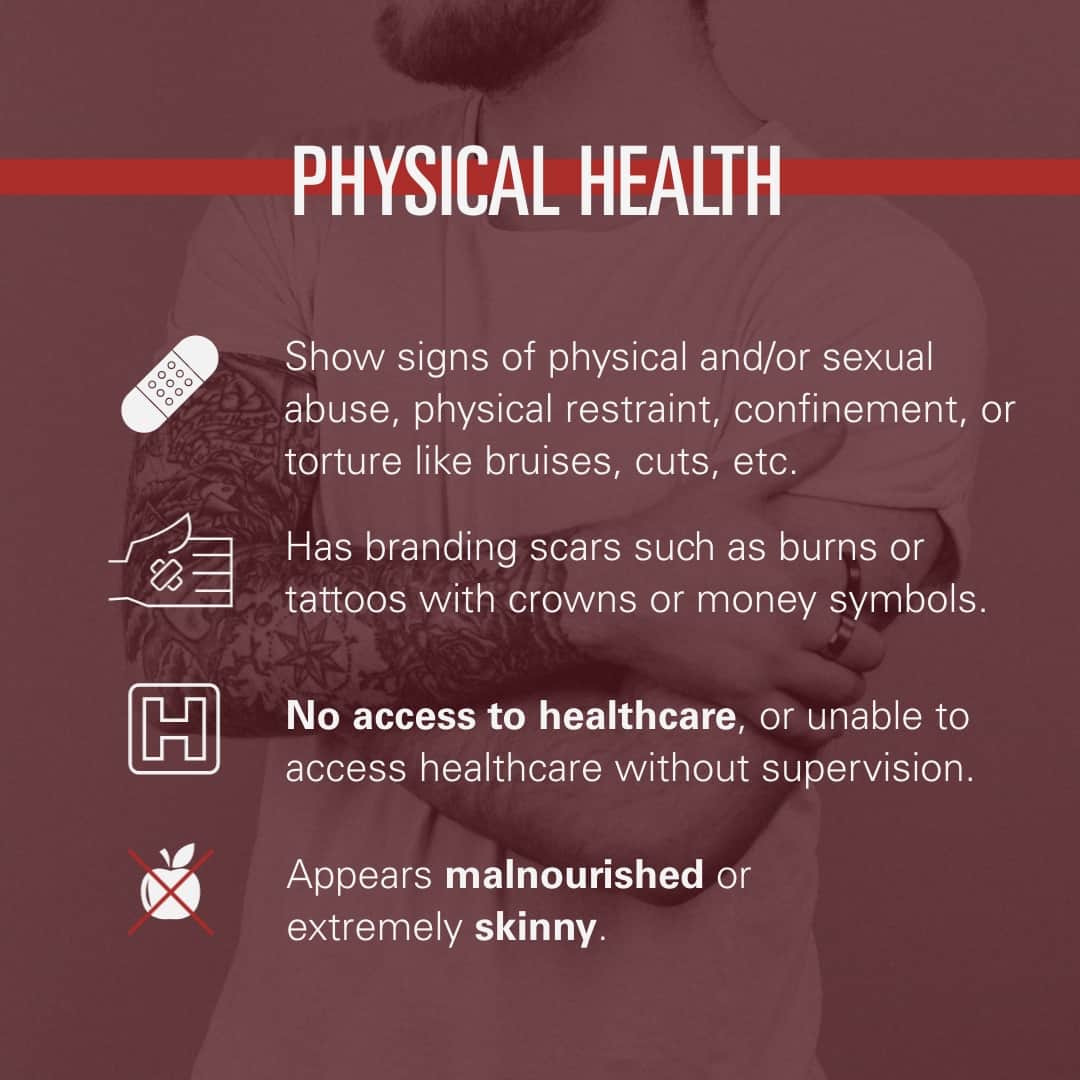
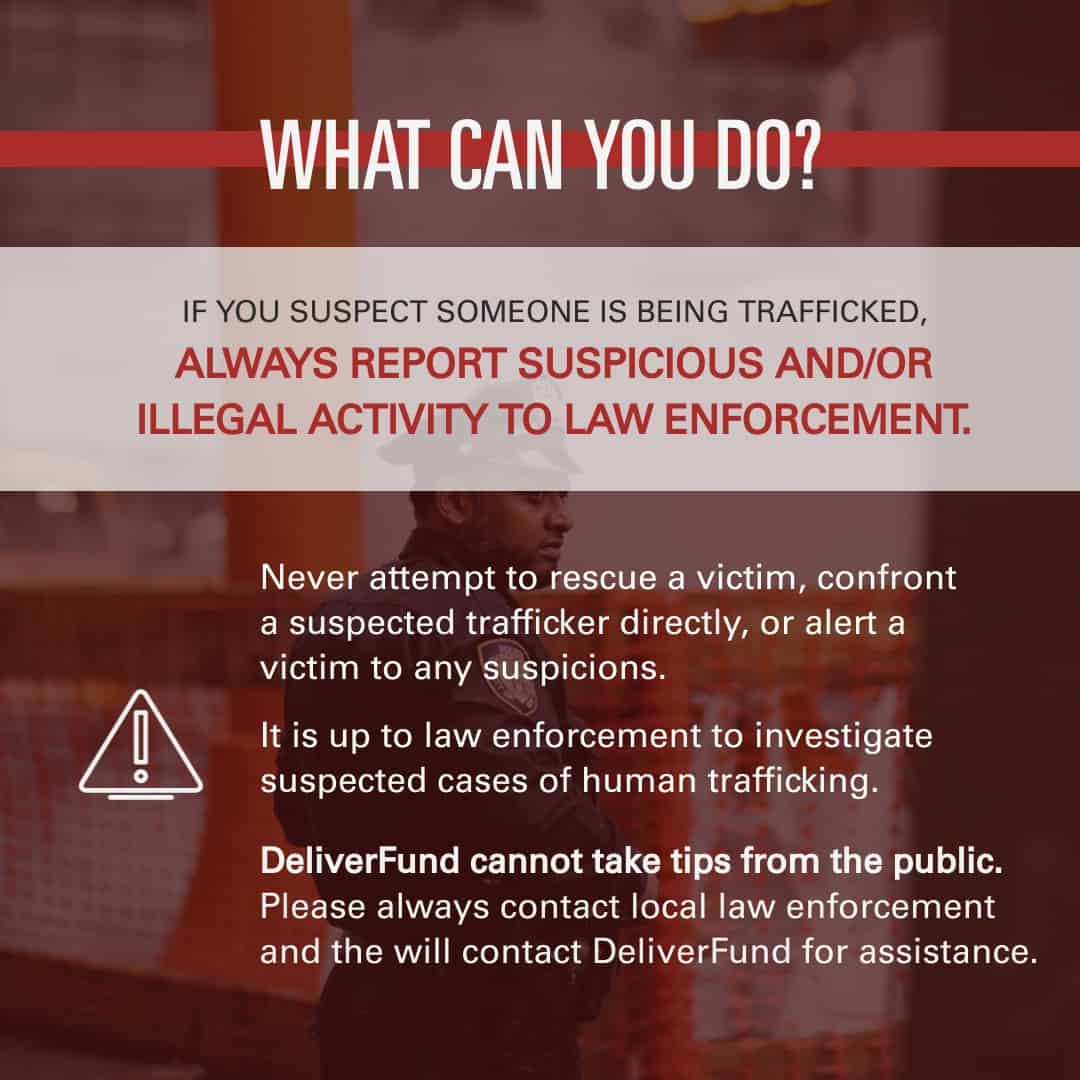
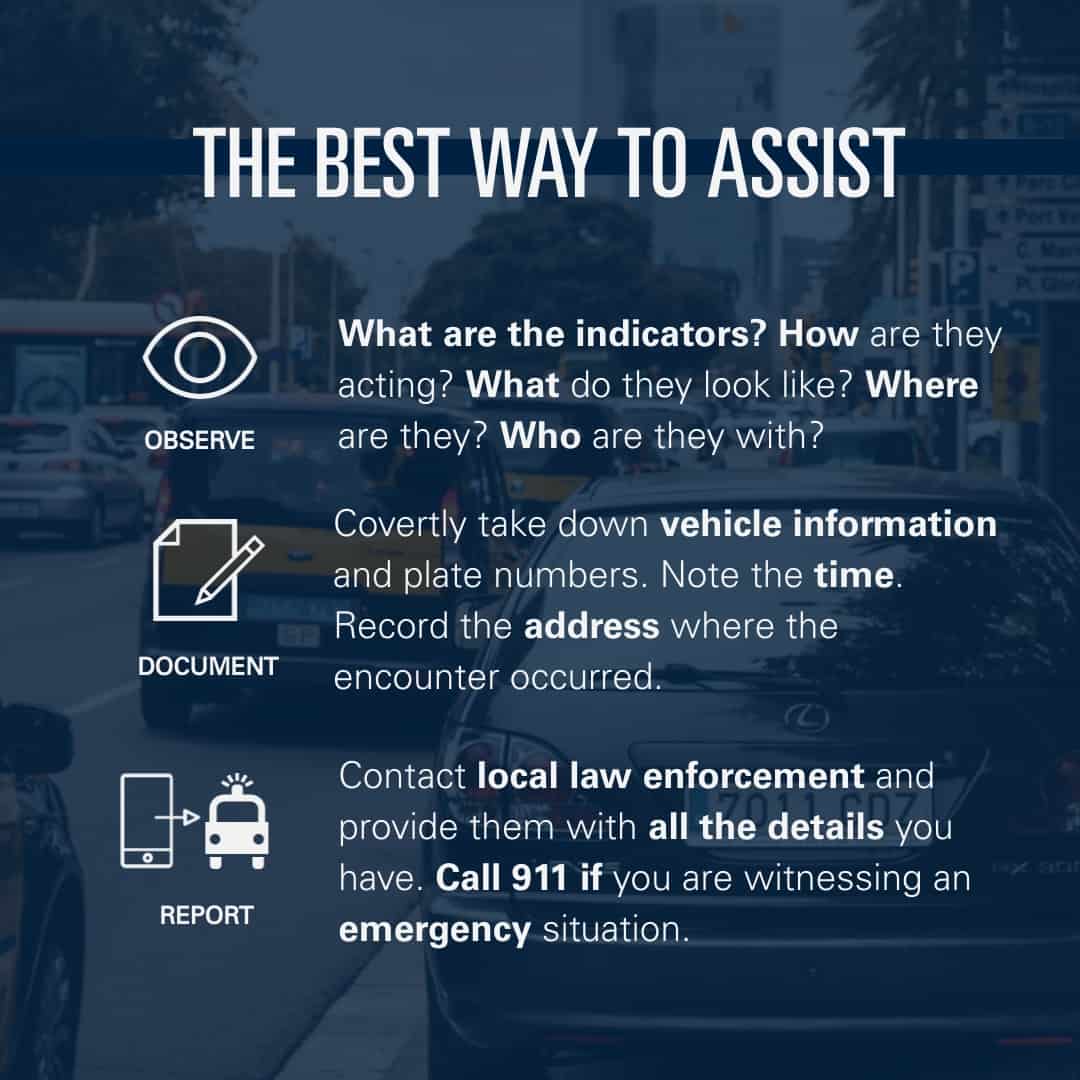
Human Trafficker
Grooming Signs
Human traffickers use any tool available to them to connect with potential victims. Contrary to popular belief, these predators rarely kidnap victims, but rather employ psychological manipulation to get what they want. The following are some of the signs of grooming for human trafficking employed by traffickers.

#1 The Hunt Begins
Targeting a Victim
Human traffickers use any tools available to them to make a connection to potential victims, such as social media, video gaming consoles, and chat rooms.

#2 Scouting Victims
Ideal Characteristics
The traffickers often search for specific characteristics that make a victim the most vulnerable. This includes emotional neediness, low self-confidence, and economic stress.
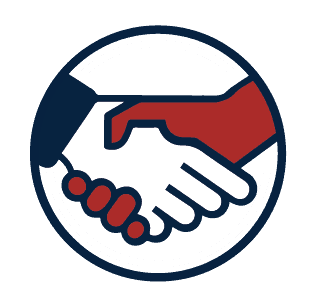
#3 Manipulation
Gaining Trust
While looking for the role they can play in a victim's life, traffickers work to obtain trust from the victim through casual conversations over weeks and sometimes over months. Traffickers also send their current victims to interact with potential victims in order to gain trust. These girls essentially act as scouts for the trafficker.

#4 Dependency
Filling a Need
The traffickers utilize the information they gathered to fill a role in the victim's life. Through gifts, love, friendship, drugs, or alcohol, traffickers force the victims into a dependent relationship.

#5 Trapping the Victim
Forced Isolation
With their new role in the victim's life, traffickers wedge themselves between the victim and those closest to them--their friends and family.
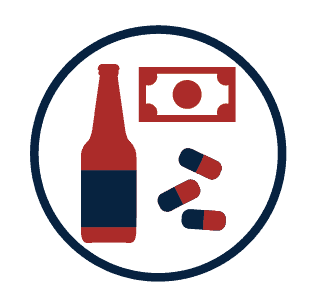
#6 Abusive Behavior
Maintain Control
The traffickers claim a service they offered must be repaid (providing drugs, alcohol, car rides, or cell phones, for instance). They typically demand sex as payment. Then, through threats, violence, fear, or blackmail, the traffickers maintain full control over the victim.
It Happens Here
Take direct action in the fight against human trafficking.
The Four Stages of Grooming
The ultimate goal of a human trafficker is to gain access and the trust of a potential victim. Sometimes this takes place over weeks or months.
The UK nonprofit organization Barnardo’s created a model called the ‘Grooming Line,’ which identifies the different tactics a perpetrator may use to groom someone.
Selection of victim
Befriending the victim, being nice, giving gifts, taking an interest, giving compliments, etc.
Gaining and developing trust
Sharing information about a target amongst other predators
Giving gifts and rewards
Spending time together
Keeping secrets
Being there for them
'No one understands you like I do'
Being their best friend
Testing out physical contact, accidental touching
Offering protection
Establishing a sexual relationship
Lowering their inhibitions - eg. showing them pornography
Engaging them in forbidden activities - eg. going to clubs, doing drugs, drinking
Being inconsistent - building up hope then pushing them away
Withdrawal of love and friendship
Reinforcing dependency on them - stating the victim is 'damaged goods'
Isolation from family and friends
Trickery and manipulation: 'You owe me'
Threatening behavior
Sexual assault
Making them have sex with other people
Giving them drugs
Playing on the victim's feeling of guilt, shame, and fear
Where to Report Human Trafficking
Human trafficking is modern-day slavery. Worldwide, more than 20 million people are held captive and trafficked each year. In the United States, a child is taken by human traffickers every 2.5 hours.
The issue is too fatal to ignore, and your help is needed now more than ever.
You can report any suspicious activity to the National Human Trafficking Hotline at 1 (888) 378-7888 or to your local law enforcement, and donate to DeliverFund to end human trafficking once and for all.
Join the Fight Against Human Trafficking
In our lifetime, we have the ability to put criminals and captors out of business. By joining a coalition of organizations, public initiatives, and governmental campaigns, we can stop trafficking before it occurs, reconnect survivors to their loved ones, and bring to justice the predators in society.
You can do your part in a number of ways:
Start a Personal Campaign
Raise Awareness
Support Investigators
When you donate to DeliverFund, you are helping us provide support to those on the front lines in the fight against human trafficking.
Donate and Join the Fight
Where Human Trafficking Occurs
Trafficking can occur anywhere, and some locations are more common than others. However, victims of trafficking are usually restricted from physically or vocally expressing themselves by their traffickers, who are often disguised as employers, landlords, or guardians, or boyfriends.
Victims can be transported via car, bus, train, boat and plane, sometimes appearing fine on the surface. While many people associate human trafficking with underdeveloped nations, the problem is actually far worse in America.
Dollar for dollar, the U.S. has a $975 million human trafficking market, which grows every year. About 150,000 people are currently held as commercial sex slaves within the U.S., and 50% of trafficking victims are children. 96% are female.
Who Is Most Vulnerable to Human Trafficking?
While anyone can become a victim of human trafficking, some populations are more at risk than others. Vulnerability is further exacerbated by ecological disasters, regime change, war, terrorism, and corrupt governments.
The following groups of people tend to make up the majority of human trafficking cases:
- Children and teens without homes.
- Children and teens in and out of foster care or juvenile facilities.
- Individuals with a history of substance abuse or mental illness.
- Survivors of past forms of violence.
- People with disabilities.
- Refugees, migrant workers or individuals or who don’t speak local languages.
- People with little to no recognized or upheld civil rights.
- Individuals with disabilities.
Make a Difference Today
Contact 1 (888) 378-7888.
Next to donating, reporting suspected human trafficking is an impactful way to end violence and disrupt human trafficking. Leave no victim behind and help deliver the change you wish to see in the world. To get involved, join the fight with DeliverFund.
Together, we can make a difference. One case at a time.
